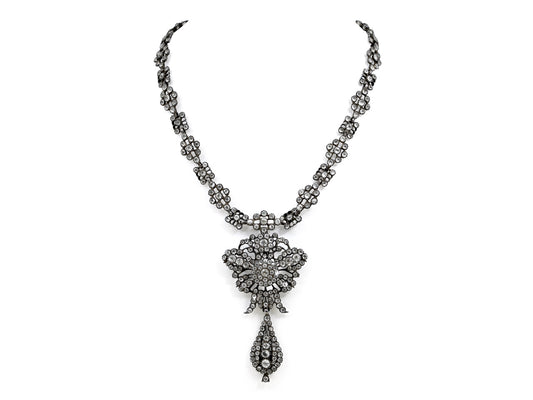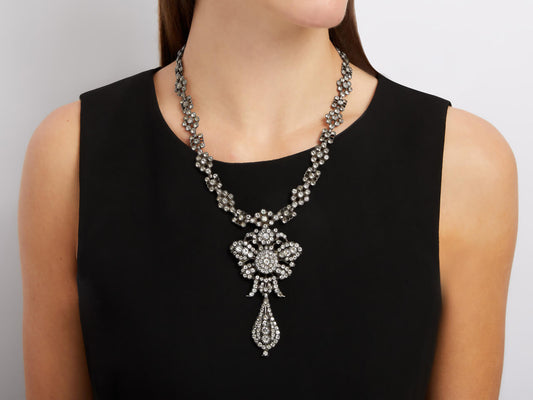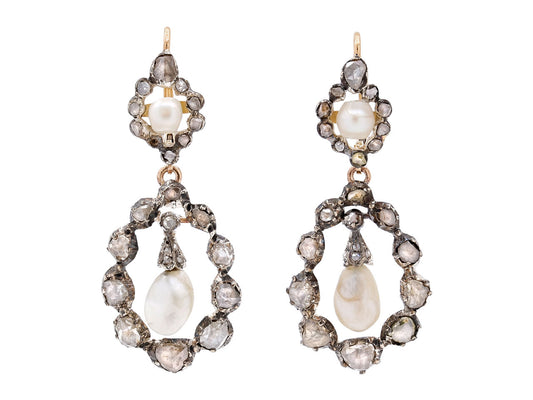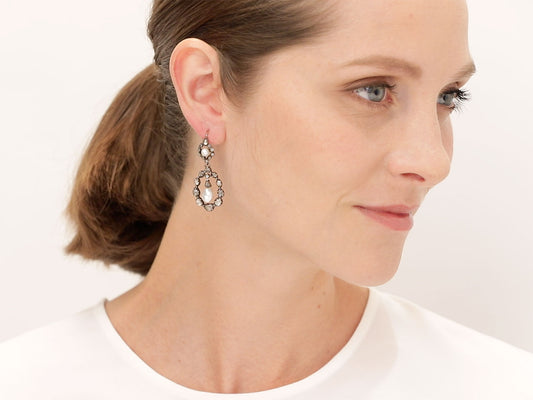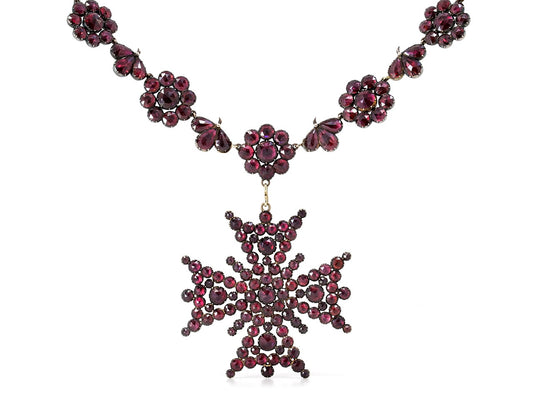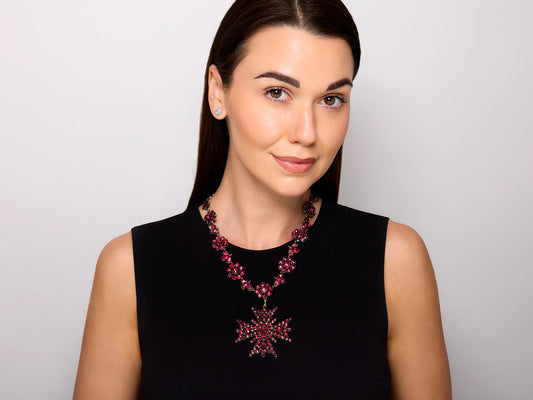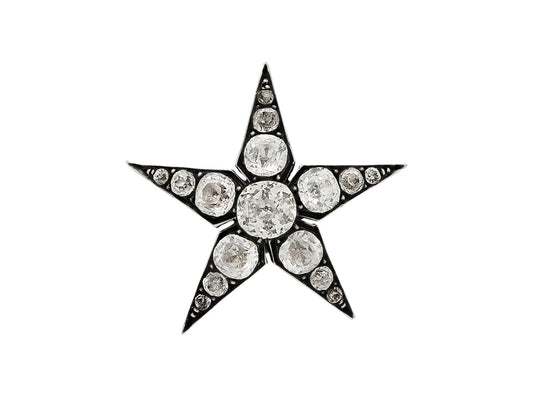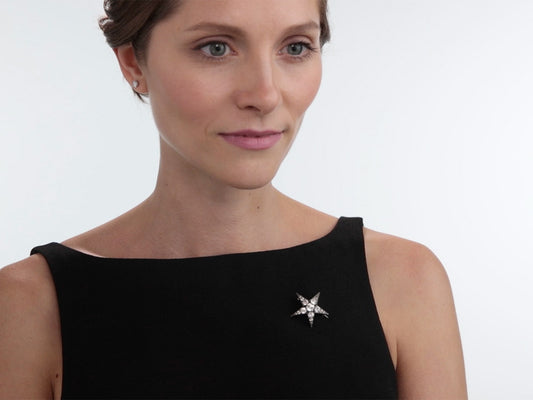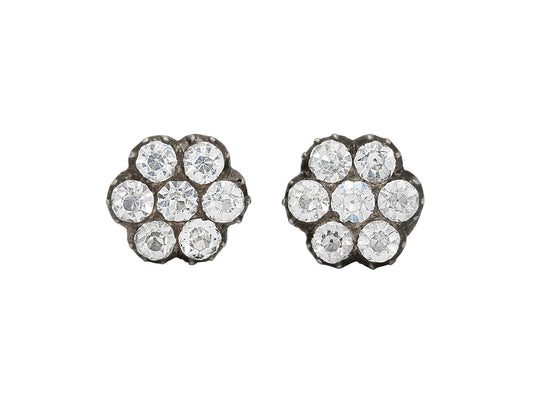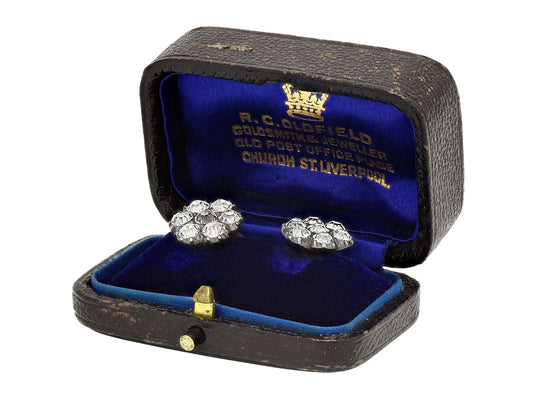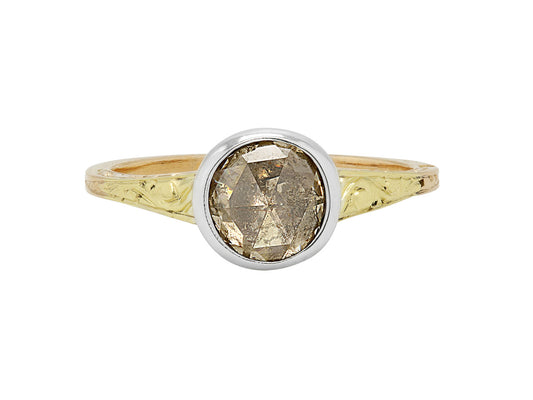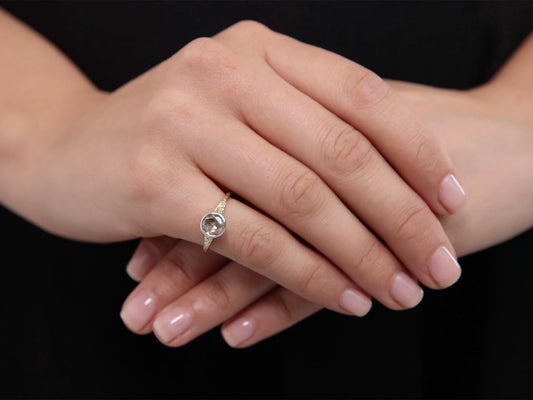-
Antique 18th Century Portuguese Black Dot Paste Stone Pendeloque Necklace in Silver
NEC-516015Price $4,950PriceUnit price per -
Antique Georgian Diamond and Pearl Earrings in Silver Over 9K Gold
EAR-513519Price $2,450PriceUnit price per -
Antique Georgian Foiled Garnet Necklace with Detachable Cross in 14K Gold
NEC-512410Price $7,500PriceUnit price per -
Antique Paste Stone Star Brooch in Silver
PIN-510730Price $650PriceUnit price per -
Antique Paste Stone Shirtstuds in Silver
MEN-510732Price $550PriceUnit price per -
Antique Georgian Diamond Ring in 15k Gold and Silver
RNG-510643Price $850PriceUnit price per
Collapsible content
What is mid-century style jewelry?
Mid-Century jewelry refers to pieces created from about 1950-1965 during the post-World War era. This transitional period between the Retro and modern periods marked a gentle shift from the more masculine, chunkier styles of the Retro 1940s to pieces that reflected clean lines, geometric shapes and designs inspired by the atomic and space ages. Mid-century jewelry features more open gold work, textured brushed mesh and braided wire - contrasting with the heavier polished look of the earlier Retro period. Popular motifs included floral designs, whimsical animals, and gem-encrusted charms and Sputnik globes as well as abstract patterns. Matching jewelry suites were popular, with shorter necklaces, clip-back earrings, and flexible gemstone-encrusted bracelets.
How does Beladora verify the authenticity of a piece?
Authenticating pieces of jewelry requires more nuanced expertise. Many thousands of pieces of jewelry have passed through our hands for over 40 years from every era and every maker. This familiarity enables us to know what a piece should look and feel like and if it has the expected quality of material and workmanship, the accurate makers marks and the correct signature in all the right places. Indeed, one of the easiest ways non-experts can be fooled is to assume a designer piece of jewelry is truly by that maker as pieces by commercial manufacturers are often outright fakes or signed fraudulently by a third party.
In practice, we first look at the front and back of a bracelet, ring or brooch, turning it over in our hands to see that the workmanship on the reverse is just as fine as the detail on the front. Using the jeweler’s important tool, the loupe, we look carefully at many different touchpoints including the precision with which the diamonds are mounted in their settings, the manner in which gold or platinum links are connected to each other, the quality of the azuring, a most difficult and refined aspect of metalwork, the fineness of the material and we look for flawless polish.
If we have any doubts whatsoever as to authenticity, we submit the piece to the firm itself, be it Cartier, Van Cleef & Arpels, Verdura, David Webb and others. We also request the original bill of sale, box and papers for those items most commonly faked such as Cartier Love brackets and VCA Alhambra pieces. And just as banks know their customers, we, too, ensure we know enough about our clients to assure ourselves of their ownership and provenance.
Our team of GIA-certified jewelry experts has such a well-regarded reputation in the international jewelry industry that we are frequently called upon to advise auction houses, appraisers and other dealers in matters of authenticity and value.

